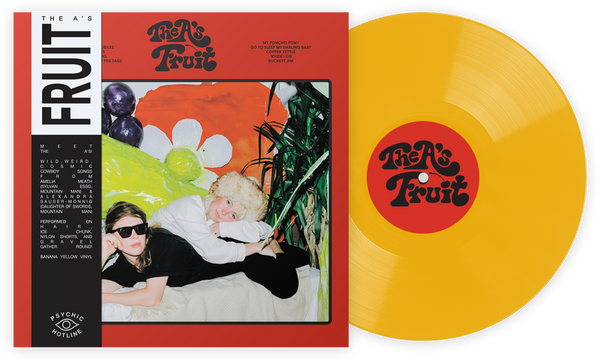If you decide to pass a slow moment by looking at a cartridge manufacturer’s website (and while you are free to judge me any way you see fit for doing this, your own browser history is likely to tell its own story of less than dynamic moments in your lives), you might notice something odd. Many companies will make what appears to be two (or sometimes even more) cartridges that are identical in every way except for the shape of the stylus—the tiny diamond that sits in the groove of the record and begins the process of turning that groove into an audio signal, and with that, the price being asked for them. These aren’t small price differences either. Changing the stylus profile can often nearly double the price of the cartridge.
So why are these differences so significant? The answer to this is—by the standards of vinyl anyway—pretty straightforward, but it makes the most sense with some context. First, what is the stylus? At the most basic level it is a piece of industrial diamond that has been shaped to a point and sits at the end of the cantilever—the object that transmits the signal it creates back to the cartridge. In essence, almost every cartridge (there are of course a tiny number of exceptions but they are sufficiently rare that we can ignore them for now) works on these principles. In very basic cartridges, the stylus attaches to the cantilever by means of a metal shank which slots into the end of the cantilever. This works well enough but increases the weight and mass of the assembly in the cartridge, which isn’t ideal. More sophisticated designs will use what is referred to as a “nude” stylus that affixes directly to the cantilever and reduces this mass.
The absolutely most basic stylus arrangement that can be made to function reliably is a conical one. As the name suggests, this is a circular cone shaped diamond that tapers down in an equal fashion to create a rounded point that travels through the groove. Until the late 1960s, pretty much every stylus ever made was a conical one and they can still be found on a number of cost effective designs to this day. Conical designs have some key advantages. They are simple to make and also forgiving in terms of setup. Because the stylus is effectively the same from any angle, the absolute alignment of the stylus in the groove is not hugely important as two “sides” of the cone will make a pass regardless of how the cartridge is aligned (I don’t advocate testing this to destruction, though, as the cantilever is designed to withstand forces “nose on” and will struggle if pushed too far outside the operating envelope).
The downside to a conical stylus is that the amount of the stylus in contact with the record is relatively low, and this reduces the amount of information that can be extracted from the groove. As such, every effort to evolve the conical stylus has been with a view to increasing the amount of stylus in contact with the groove and to more closely resemble the cutting head that fashioned the groove in the first place. Through careful design, some have also reduced the stylus mass and narrowed the overall profile of the stylus which helps it sit still deeper in the groove of the record and find even more fine detail.
Logically enough, the simplest way of doing this is to elongate the cone into an oval. The result is an elliptical stylus. This is generally the profile that is the first level of upgrade from a conical stylus in a manufacturer’s line up and a profile that will also generally mark the point where the stylus will almost definitely be a nude design. Equally, the elliptical stylus also represents the last type of stylus design that is not a specific shape. While the patent for an elliptical stylus is held by Grado, the exact shape of different elliptical styluses will vary from brand to brand.
After this, every stylus you are likely to encounter can be categorised as “line contact,” but as well as this is likely to have its own specific name. One of the first such designs appeared in the late 1960s as the “Shibata”-type stylus, named for its inventor Norio Shibata of JVC. What the Shibata—and indeed all the other derivations of line contact—does is produce a more nuanced version of the oval on the end of the elliptical stylus. As well as Shibata, various other versions exist from Microline, Vital, Gyger and Van den Hul—but they all take the same principal and alter the shapes slightly to fix whatever perceived bugbear the designer happened to have.
So how significant are these styluses on performance? The answer can be very. With all other variables being unchanged, the level of performance a line contact stylus can achieve over a conical design is often a considerable surprise to people. On the outer playing surfaces of a record, where there is plenty of space for the information in the groove, the improvements can be subtle but as the cartridge heads to the centre of the record where the information is more compressed, this is where a better stylus profile starts to earn its keep. That extended contact surface can find information that a conical stylus simply cannot.
There are caveats to this—isn’t there always? The first is that the more sophisticated the stylus profile, the more complex and expensive it is to make. Some profiles like the Gyger and Van den Hul do not commonly appear in models too far below the $600 to $800 point and even the more frequently encountered versions are still much more expensive than more ordinary conical stylus profiles. As there are other cost variables in cartridges, getting a high end stylus on an equally high performance cartridge will often cost a very significant amount of money.
The second is that as the contact point of the stylus gets longer, the setup for it becomes more and more crucial. If a conical stylus is out of alignment, its shape will nullify some of the effects of this. Line contact models in the same situation will essentially be dragging their profile slightly sideways through the groove, causing wear to both the cartridge and the record and failing to get as much information as is actually available out to the rest of the system. If you are installing such a design, I am afraid that there is no such thing as “good enough.” Unless the alignment, vertical tracking angle and azimuth (the vertical alignment) are correct, you are wasting your money.
If you own a correctly aligned moving magnet cartridge though—either as aligned from the factory, or because you read our guides and did a spectacular job yourself—you can often simply exchange the stylus for a higher quality example on the same installed cartridge body. This makes for much simpler setup and offers the potential for a quick and worthwhile performance boost. It might seem surreal what the effect of a tiny piece of industrial diamond can have on your music, but a decent stylus is one of the savviest investments you can make.
Ed is a UK based journalist and consultant in the HiFi industry. He has an unhealthy obsession with nineties electronica and is skilled at removing plastic toys from speakers.








